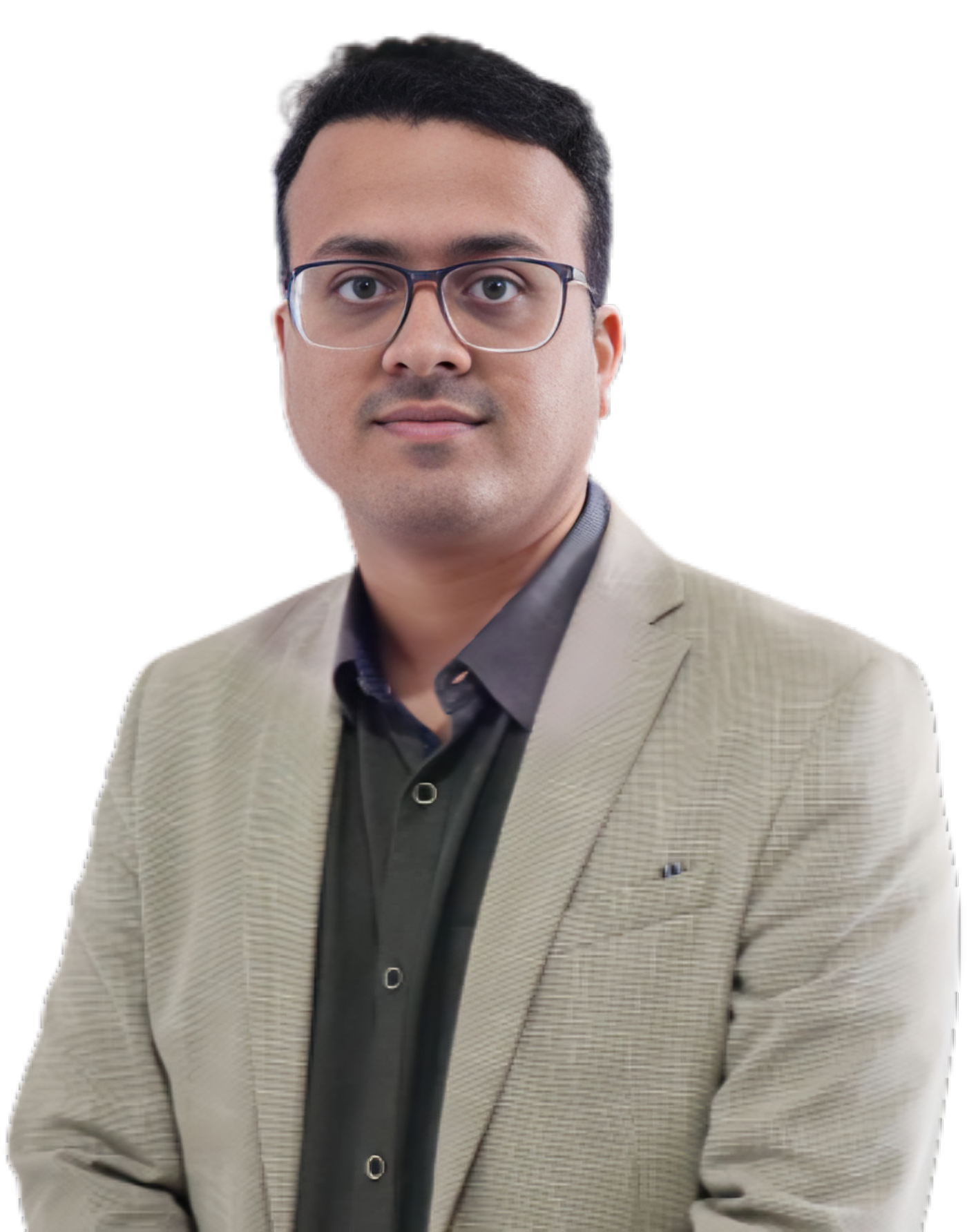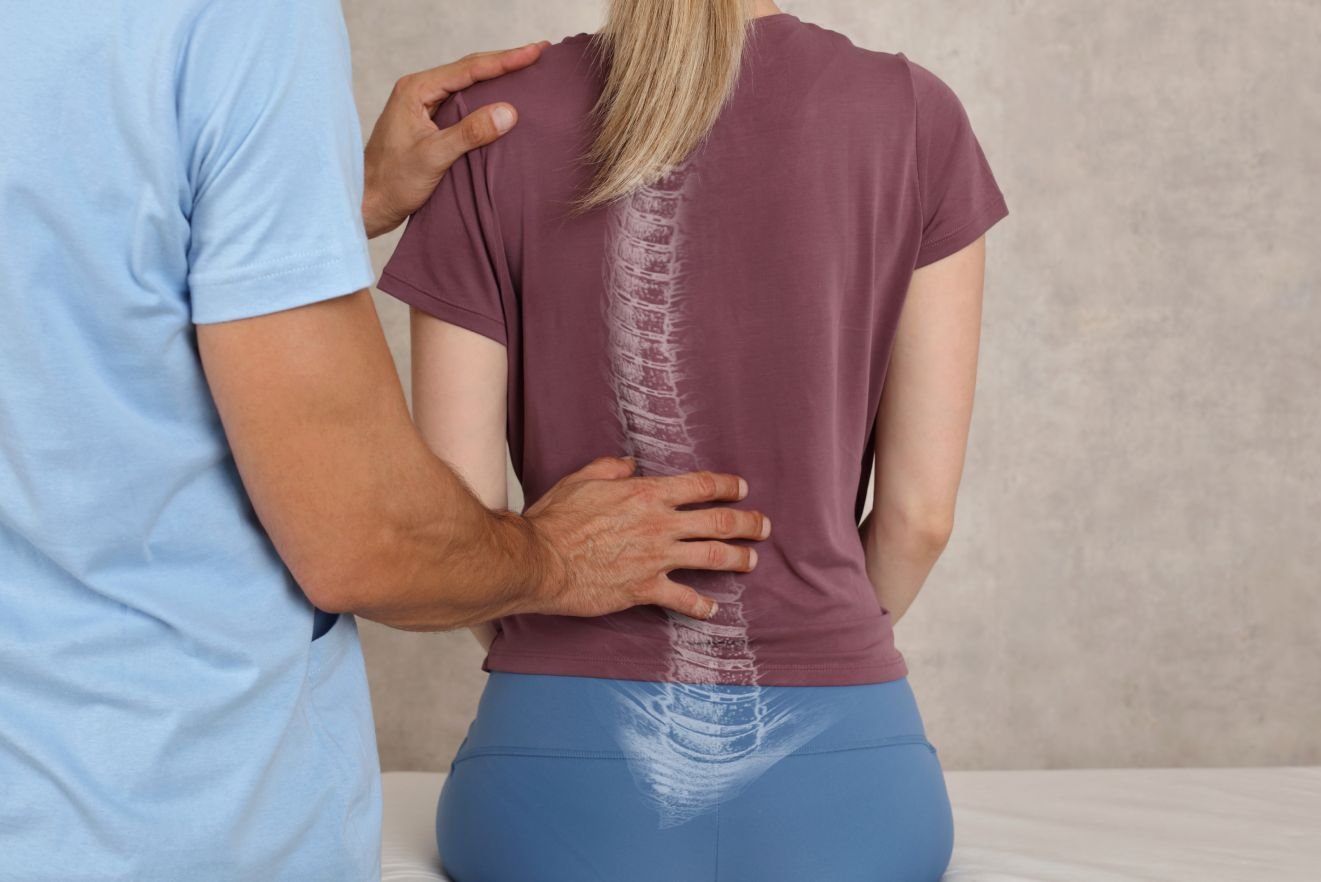Dr. Paresh Bang | Matruchhaya Spine Clinic
Meet Our Doctor
Dr. Paresh Bang
Consultant Spine Surgeon

Scoliosis Treatment In Chandrapur

Scoliosis Treatment
Scoliosis treatments depending on the size of curve. Children who have very mild curves usually no need to any treatment at all, although they may need regular checkups to see if the curve is worsening or they grow.
Bracing or surgery may be needed if spinal curve is moderate or large. If child bones have stopped growing the risk of curve progression is low. That also means that braces have most effects children whose bones are still growing. Bone maturity be checked with hand X-rays.
Larger curves are more likely worsen with time.
Girls have a much higher risk of progression than do boys.
Scoliosis is a condition where spine curves abnormally to the side, can affect not only the musculoskeletal system but also other organs and bodily functions depending on severity of curve.
- Musculoskeletal System
- Spine, Ribs, &Pelvis: spine curves, it can cause asymmetry in the ribs and hips.
Uneven shoulders or hips - One shoulder blade protruding than other
- Visible rib hump or uneven waist
- Back pain (more common in adults)
- Limited range of motion in the back
2.Lungs (Respiratory System)
- Severe scoliosis (typically with a curve greater than 70 degrees) lead to reduced space in chest cavity, limiting the ability of lungs to expand fully.
- Shortness of breath especially during physical activity
- Fatigue
- Frequent respiratory infections severe cases
3.Heart (Cardiovascular System)
In severe scoliosis ribcage may press the heart, limiting ability to function properly. The heart may struggle to pump blood efficiently, leading to cardiovascular complications.
- Chest pain
- Difficulty breathing, especially with exertion
- Palpitations or irregular heartbeats
- Lower tolerance for physical activity
General Symptoms of Scoliosis
- Posture changes: lean to one side, forward head posture
- Back stiffness: Muscle tightness in spine, especially around the curve
- Fatigue: Due to the strain on muscles and joints from abnormal spinal alignment
- Pain: Common in adults with degenerative scoliosis less frequent in children or adolescents
Risk factors
Several risk factors can increase likelihood of developing scoliosis. These factors may relate to genetic, environmental & underlying medical conditions.
1. Age
During growth spurts: The most common form, adolescent idiopathic scoliosis (AIS) is typically occurs between the ages of 10 and 15.
2. Sex
Girls are at higher risk: Progressive scoliosis in girls is more likely to necessitate bracing or surgery.
3. Family History and Genetics
Genetics: family history of scoliosis increases the risk. having a parent or sibling with scoliosis increases the likelihood of developing it.
4. Underlying Medical Conditions
- Neuromuscular conditions: Individuals with conditions like cerebral palsy, muscular dystrophy, spina bifida, or spinal muscular atrophy at higher risk for scoliosis due to muscle weakness or imbalances affecting the spine.
- Connective tissue disorders: Conditions like Marfan syndrome and Ehlers-Danlos syndrome can increase the risk of scoliosis due to weak connective tissues and joint hypermobility.
- Congenital scoliosis: Some people are born with spinal abnormalities that lead to scoliosis, often caused by vertebrae that don’t form properly during fetal development.
5. Rapid Growth
Growth spurts during adolescence: Rapid skeletal growth can contribute to the development of scoliosis or the worsening of a preexisting spinal curve.
6. Osteoporosis (in Adults)
Degenerative scoliosis: Adults, especially older individuals, may develop scoliosis as a result of osteoporosis and the weakening of vertebrae, leading to spinal misalignment.
7. Previous Back Injury or Surgery
Spinal trauma: Previous spinal fractures, injuries, or surgeries can lead to abnormal curvature in some cases, particularly in older adults.
8. Occupation and Lifestyle Factors
Heavy physical labor: Some studies suggest that repetitive stress or strain on the spine, as seen in certain physical jobs.
Sedentary lifestyle: Lack of physical activity may contribute to weak core muscles.
9. Hormonal Factors
Early onset of puberty: Hormonal factors related to early onset puberty may be linked to the development of scoliosis.
10. Poor Posture (Contributing Factor)
While poor posture alone does not cause scoliosis, maintaining poor posture over long periods, especially during growth phases, may exacerbate the condition in individuals with a predisposition.
Complications
Scoliosis lead to several complications, particularly if curve progresses or treatment is delayed. These complications can affect both physical health and quality of life. The severity of complications often depends the degree of spinal curvature, age, and whether the condition is to properly managed.
- 1. Chronic Back Pain
Description: Adults with scoliosis, especially degenerative scoliosis or untreated severe cases from adolescence, often experience chronic back pain.
2. Respiratory Problems (Lung Function Impairment)
Description: In severe scoliosis the ribcage may compress the lungs, reducing their capacity to expand and limiting breathing.
3. Cardiovascular Issues (Heart Problems)
Description: Severe scoliosis can also affect the heart function properly. The heart may struggle to pump blood efficiently, leading to cardiovascular complications.
4. Mobility Issues and Physical Deformity
Description: Severe scoliosis can lead to physical deformities can affect posture, gait, and mobility.
5. Nerve Compression (Radiculopathy or Myelopathy)
Description: In cases, scoliosis can lead to nerve compression, either within spinal cord (myelopathy) or spinal nerve roots (radiculopathy).
6. Digestive Problems
Description: A severely curved spine can put pressure on abdominal organs, in particular cases of severe scoliosis, making digestion less efficient.
7. Psychosocial Impact
Description: The physical appearance of scoliosis, especially in adolescents, can lead to significant emotional and psychological distress.
8. Post-Surgical Complications
Description: In cases where surgery is required, there are risks associated to spinal fusion or other corrective procedures.
9. Degenerative Changes (in Adults)
Description: Over time, scoliosis can lead to accelerated wear and tear on the spine’s discs and joints, leading to conditions like:
10. Progression of the Curve
Description: In some cases, especially for adults with degenerative scoliosis or untreated scoliosis in adolescence, the curve can worsen over time.
Advantage in Scoliosis Surgery
Scoliosis surgery can have many advantages
Improved curve: Surgery can correct and improve the curve of spine, and prevent from worsening.
Reduced pain: Surgery can help reduce pain and discomfort associated with scoliosis.
Increased mobility: Surgery can increase mobility in some cases.
Improved posture: Surgery can improve posture alignment by straightening the spine.
Improved lung function: Surgery can improve lung function by creating more space in chest cavity.
Improved self-image: Surgery can improve self-image and confidence
Reduced rib prominence: it can reduce rib prominence and diminish spinal deformity.
Improved physical appearance: Surgery can improve physical appearance, including a straighter spine, better balance, and reduced rib prominence.
- Idiopathic Scoliosis: The most common form, often found in adolescents with no clear cause.
- Congenital Scoliosis: Present at birth due to malformations in the spine.
- Neuromuscular Scoliosis: Associated with conditions like cerebral palsy and muscular dystrophy.
- Degenerative Scoliosis: Typically occurs in adults due to the wear and tear of the spine over time.
- Physical Examination: The doctor checks the curve of the spine by asking the patient to bend forward.
- X-rays: Used to measure the degree of curvature.
- MRI/CT Scan: In rare cases, to investigate underlying issues like spinal cord abnormalities.
Non-Surgical Treatment
- Observation: In mild cases (curves less than 20 degrees), especially in children, doctors often recommend regular check-ups to monitor the curvature.
- Bracing: If the curve is between 25 and 40 degrees and the patient is still growing, a brace might be used to prevent the curve from worsening.
- Types of Braces:
- Thoracolumbosacral Orthosis (TLSO): The most common type, it wraps around the torso.
- Milwaukee Brace: Covers the torso and extends to the neck, used for high thoracic curves.
- Types of Braces:
- Physical Therapy: Specific exercises can help improve posture, core strength, and spinal alignment. Techniques like the Schroth Method focus on scoliosis-specific exercises.
- Chiropractic Care: In some cases, chiropractic adjustments may help reduce pain and improve flexibility, though it does not correct the curve itself.
Surgical Treatment
Surgery is usually recommended if the curve is more than 45-50 degrees or causing severe pain, breathing issues, or other complications. The primary goal of surgery is to reduce the curve and stabilize the spine.
- Spinal Fusion: The most common scoliosis surgery. Two or more vertebrae are fused together to stop the curve from worsening.
- Procedure: Rods, screws, and bone grafts are used to realign the spine and prevent further curvature.
- Recovery: It requires a hospital stay and physical therapy. Full recovery can be take several months.
- Growing Rods: Used for young children to allow growth while controlling the curvature.
- Procedure: Rods are attached to the spine and lengthened periodically to allow growth while maintaining spinal alignment.
- Vertebral Body Tethering (VBT): A less invasive option for children with moderate scoliosis. A flexible tether is attached to the vertebrae to slow the progression of the curve while allowing movement.Contact Us
- Spinal Fusion: The most common scoliosis surgery. Two or more vertebrae are fused together to stop the curve from worsening.
- Physical Therapy: Helps regain strength, mobility, and flexibility after surgery or treatment.
- Pain Management: Patients may experience some pain or discomfort, which can be managed with medication, physical therapy, or alternative treatments like acupuncture.
- Long-Term Monitoring: Even after surgery or treatment, periodic check-ups are important to monitor the spine’s health.Visit Our Hospital
